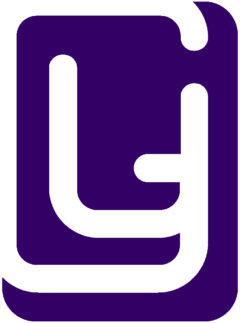1 Greeting
UG Osteopath will greet you in the waiting room and you will be asked to enter the treatment room.
2 History taking
He asks you about the areas that show symptoms and other health information in detail. It takes usually 20 minutes or a little more. During the history taking, he tries to find the cause of the problem from 3 main points of view:
- Why this symptom?
- Why this patient?
- Why now?
Because nearly 70% of the diagnosis will be based on information from the history taking, the first consultation is highly important to find the root of your health condition. If necessary, he may ask you more questions about childhood. He often asks about work, hobbies, sports, episodes of injury and/or surgery, and what activities make the sympotoms worse or better.
For example, have you ever experienced any prolonged pain following a traffic accident, bone fracture, sprain or falling injuries? Often, symptoms can come from distant causes.
Sometimes, it might be difficult for you to remember the details of your medical history that happened a long time ago. However, there is no need to worry. It is possible to trace and unravel these from the current symptoms such as pain, pins and needles and numbness for example. During the history taking, you may recall the history of a painful experience. As you remember it again, you simply explain it to the practitioner. By analysing the gathered information, the osteopath usually finds the cause of the problem. Once he does it, he can strategically guide you to a healthy state.
3 Examination
UG Osteopath performs an osteopathic / clinical examination. It is based on the information analysis from the history taking.
The examination is a process of testing your body structures by observing, palpating and checking the active and passive resistance when moving body parts.
At practices in Europe, osteopaths usually inspect the body structure of patients in underwear. This allows the practitioner to examine the body structure precisely. It also gives more information by observing and palpating your structure from the head to toes and from side to side. He does not only analyze it with the eyes, but also with the palm of the hands and fingers.
The direct contact gives much detailed information; for example, where mechanical force is blocking the function of the body movement. At the examination, he also checks the body temperature, the heat, moisture of the swollen area, the hardness of the tissues, the range of the movement, and the tension of the organs (skin is also considered an organ). It is simply easier to palpate differences in height, direction and torsion by hand.
The gathered information is highly important to diagnose the cause of the problems linked to your symptoms. If necessary, he uses simple orthopedic and neurological examinations to back up his working diagnosis. If you do not want to undress to underwear, there is no problem. Please bring light clothing such as shorts, a tank top or a camisole with you. Blankets are available a for cold weather or room temperature.
4 Diagnosis
In order to find out the cause of your health problem, UG Osteopath finally analyses the information and data from the history taking and the clinical examination. Once the diagnosis is logical and clear, he explains you how the particular health issue has occured to you. He will be able to tell you the treatment plan, including a prognosis and the approximate number of treatments required. On the day of your first treatment, you might find that the duration of the actual treatment is shorter because UG Osteopath normally spends more time for case history and clinical examinations and making a diagnosis, but finding the cause of the problem is very important for a better and effective treatment.
5 Treatment
He briefly explains how the treatment is going to be done. Manual work is usually done on the patient in underwear. Please let the practitioner know if you have sensitive skin, feeling pain, and/or discomfort from the direct contact. He tries to avoid irritating it. Please do not hesitate to tell the practitioner if you have any questions during the appointment time. If you ask questions out of the consultation hours, it might be difficult to find sufficient time to answer them.
6 Re-examination (follow-up)
From the second time on, UG Osteopath will have more time to focus on the actual treatment. Once the diagnosis is made, there is simply more time to take care of the body. Osteopaths have a variety of osteopathic manual techniques. In some techniques, active muscle contraction is required. In other techniques, the body needs to relax and the patient just passively lets the osteopath work.
Occasionally, both the osteopath and the patient need to be relaxed and feel the energy going through the body. He chooses which treatment techniques are suitable for you particularly.
For example, he might use a technique called “manipulation”, which often makes a cavitation sound (a “crack”). In that case, he will always ask you for verbal consent. If you are not comfortable with the technique, we can choose from other effective techniques instead.

